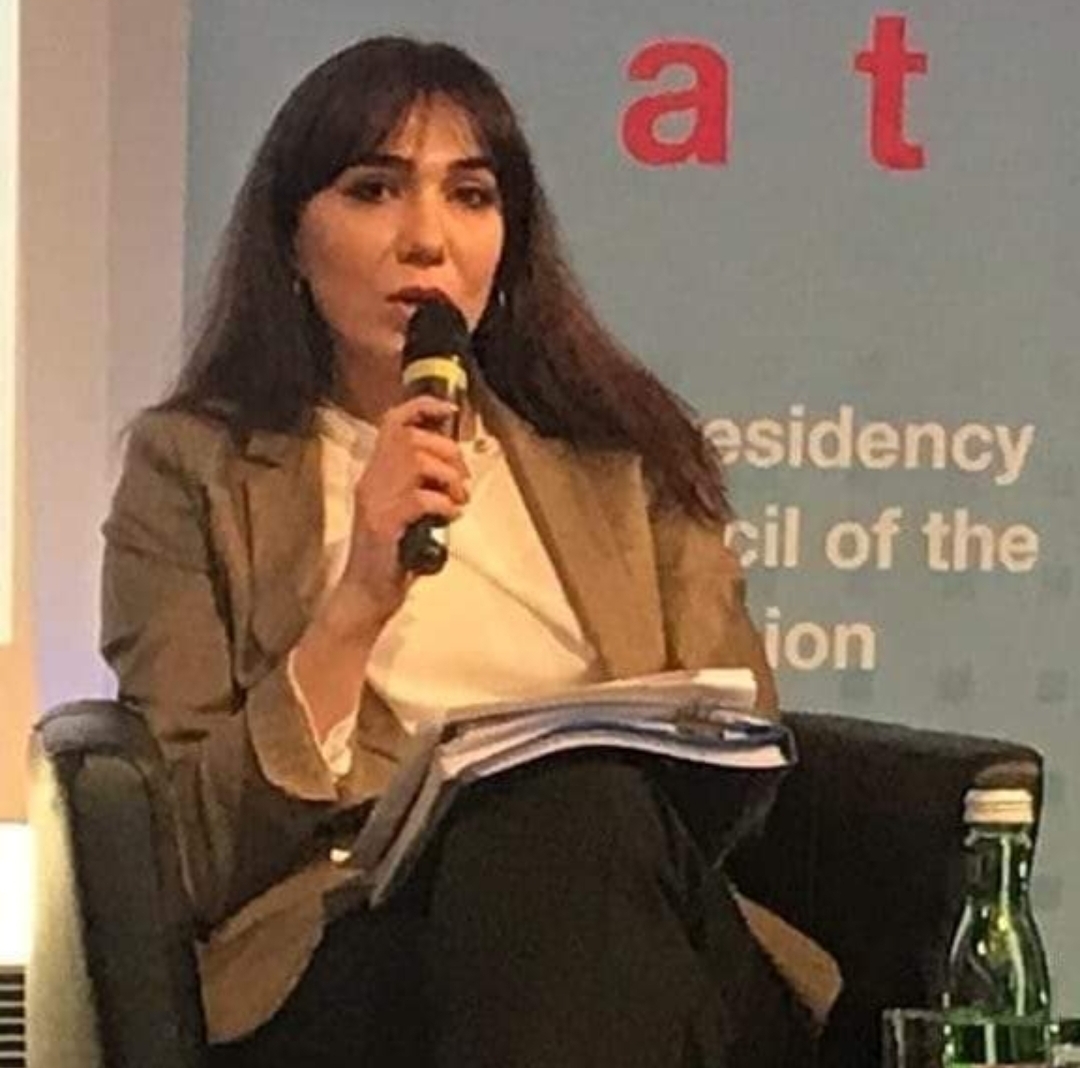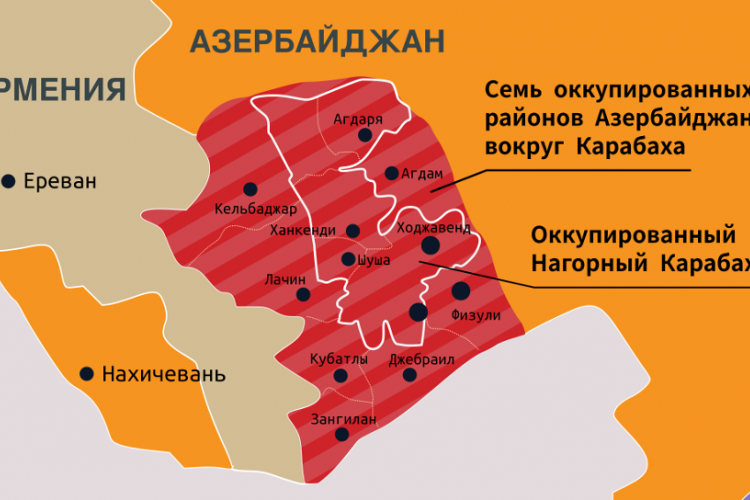The occupation of Azerbaijani territories is undermining the prospects for restorative justice. Armenia therefore must engage in constructive negotiations with Azerbaijan towards the attainment of just and lasting solution to the Armenia-Azerbaijan conflict, to the greater benefit of itself, as well as regional stability and cooperation. It should be in the best interest of Armenia to work towards achieving restorative justice with Azerbaijan and finally assume responsibility for its actions, having thus laid the foundation for peace and co-existence with the Azerbaijani population in the South Caucasus.
It is necessary to discuss the decades-long Armenia-Azerbaijan conflict from the prisms of restorative justice. In conflict resolution literature, “restorative justice” envisages a set of actions for soothing hostilities between the conflicting parties. The Armenia-Azerbaijan conflict started with an armed military assault launched by Armenia against Azerbaijan in the late 1980s and early 1990s. The war (1988-1994) resulted in Armenia’s occupation of the Nagorno-Karabakh region and seven adjacent regions, whist the four UN Security Council resolutions (822, 853, 874, 884) demanding the liberation of the occupied Azerbaijani territories are still ignored. Conflict resolution has so far remained elusive, despite the fact that the OSCE Minsk Group’s Co-Chairmanship Institute, which includes the United States, France and Russia, has been working on this gargantuan task since 1997. To approach a resolution to the Armenia - Azerbaijan conflict, it is necessary that Armenia negotiate with the principles of restorative justice in mind.
Despite the fact that several meetings between the foreign ministers of the two countries were held in 2019 and positive dynamism was noted on the human track with mutual visits of journalists taking place for the first time, substantial progress was not achieved in the negotiations. Therefore, the year 2019 was dubbed as the “lost year for the conflict settlement.” In January 2020, a meeting between the Foreign Ministers in Geneva took place, which was followed by the much-discussed Munich debate between President Ilham Aliyev and Prime Minister Pashinyan in February. This debate was assessed by some experts as being rather counterproductive, as it enhanced contradictions and did not contribute to the approximation of positions of the conflicting parties.
Then came the so-called “parliamentary and presidential elections” held by Armenia in the Nagorno-Karabakh region, the results of which were not recognized by any member of the international community. The elections resulted in the Shusha provocation when the “newly elected president” of the puppet regime in the occupied territories of Azerbaijan was “inaugurated” in Shusha – a city of great moral and cultural significance for Azerbaijan. Incendiary comments by Armenian Prime Minister Pashinyan denying Russia’s Foreign Minister Lavrov’s words about the fact that the staged and step-by-step solution of the conflict was ever the subject of negotiations, added more fuel to the fire.
Against this backdrop, military exercises were held by the Armed Forces of Azerbaijan in May, including in Nakhichevan, while the country also stepped up its military purchases from abroad. Azerbaijan’s purchases were initiated through the recent ratification of the military-financial agreement by the parliament on May 31, which enables Azerbaijan to buy new weapons from Turkey to strengthen its military capabilities. Turkish drones are considered to be a serious option among the wide array of choices that are available under the agreement.
From July 12 to 14, Armenia violated the ceasefire, this time on the Armenia-Azerbaijan international border in the direction of the Tovuz district of Azerbaijan. After the attack was stopped by Azerbaijan, international actors, including the European Union, OSCE Minsk Group co-chairs, and the Russian Federation called for an immediate cessation of hostilities.
Moreover, COVID-19-induced lockdowns have further thrown a wrench into the negotiation process. The parties met during the pandemic on April 21 and June 29 through 30 via a video conference between the foreign ministers Mammadyarov and Mnatsakanyan with the participation of Minsk Group co-chairs Igor Popov of Russia, Stephane Visconti of France, Andrew Schofer, of the United States, and Andrej Kasprzyk, the personal representative of the OSCE chairperson-in-office. The joint statement of the April 21 meeting stated that given the current unprecedented challenges faced by people all over the world, “…the Foreign Ministers and the Co-Chairs expressed the hope that the resolve seen in the global pandemic response will bring a creative and constructive impetus to the peace process.” Furthermore, the co-chairs, in the joint statement of June 29 and 30 meeting, called upon the parties “to take additional steps to strengthen the ceasefire and to prepare the populations for peace.”
Given the context of stalemate, the concept of restorative justice to the Armenia-Azerbaijan conflict becomes important to consider. Restorative justice, a term that stems from conflict resolution literature, means taking actions towards reducing animosity between the conflicting parties. The proponents of this idea argue that “the punishment of the offenders alone does not prevent them from continuing to hate the other side.” Therefore, it is best that “the offenders take the responsibility of acknowledging their offense and get motivated to change the relationship from destructive to constructive.” The concept does not merely seek to compensate the victims for the losses it incurred at the hand of the offender. It also necessitates that existing systems be revised so that injustices perpetrated in the past would no longer be possible in future.
These elements of restorative justice, especially the latter concerning the necessity to revise existing systems, must become a part of Armenia’s policy during this conflict resolution and a subsequent peacemaking process. Acceptance of all wrongdoings towards Azerbaijan and genuine intention to work towards fair and lasting peace based on the norms and principles of international law, including respect for sovereignty, may lay the foundation for achieving restorative justice in this rocky neighborhood.
Denial of the meager progress achieved in the negotiation process so far, just as Armenia’s Prime Minister Pashinyan recently vocalized, further jeopardizes the already tenuous situation and slims the prospects for restorative justice. Moreover, in-your-face kind of provocations initiated by Armenian leadership — first in Khankendi in November 2019 where Pashinyan brazenly declared that “Nagorno-Karabakh is Armenia, period” and later in the aforementioned Shusha provocation and blatant violations of the ceasefire, including the recent Tovuz provocation – all undermine hopes that some sort of progress might be possible this year. Rather than exacerbate the conflict, nations should seek good neighborly relations and peaceful co-existence within the region they belong to. This is critical for the South Caucasus, a region incredibly disintegrated due to the unresolved conflict between Armenia and Azerbaijan.
There are three important steps therefore that Armenia has to take towards attaining restorative justice. First, Armenia must assume responsibility for its decades-long military occupation. Second, Armenia must genuinely engage in negotiations towards peaceful resolution of the conflict based on respect for the principles of sovereignty and territorial integrity, and the highest degree of self-rule offered by Azerbaijan to the Nagorno-Karabakh region as a part of future settlement formula. Third, Armenia must work in tandem with other neighbors towards the improvement of regional architecture and pursue good relations with all states in the region, including Azerbaijan. These steps will, in return, attract similar cooperative moves by Azerbaijan in the form of opening of communications, borders with Armenia and its inclusion into all large-scale regional energy and infrastructure projects implemented by Azerbaijan and its international partners. Taking such actions may also mean that Armenia and Azerbaijan could finally reengage and reintegrate their populations and societies.
Restorative justice, which involves the conflicting parties in a dialogue, “encourages offenders to take responsibility for their actions and offer an apology, toward the reestablishment of a consensus between the parties.” Restorative justice is often juxtaposed to “retributive justice,” which mostly carries the punishment connotation to the offender, whereas restorative justice aims at soothing the animosity and hostility between the parties upon the acknowledgement by the offender of its own disruptive deeds. This in its own turn will create an environment where the offender and victim could co-exist in future.
The occupation of Azerbaijani territories is undermining the prospects for restorative justice. Armenia therefore must engage in constructive negotiations with Azerbaijan towards the attainment of just and lasting solution to the Armenia-Azerbaijan conflict, to the greater benefit of itself, as well as regional stability and cooperation. It should be in the best interest of Armenia to work towards achieving restorative justice with Azerbaijan and finally assume responsibility for its actions, having thus laid the foundation for peace and co-existence with the Azerbaijani population in the South Caucasus.
Esmira Jafarova Ph.D. is a Board Member of the Baku-based Center of Analysis of International Relations (AIR Center)
Source: https://gjia.georgetown.edu/2020/08/05/restorative-justice-in-the-conte…


